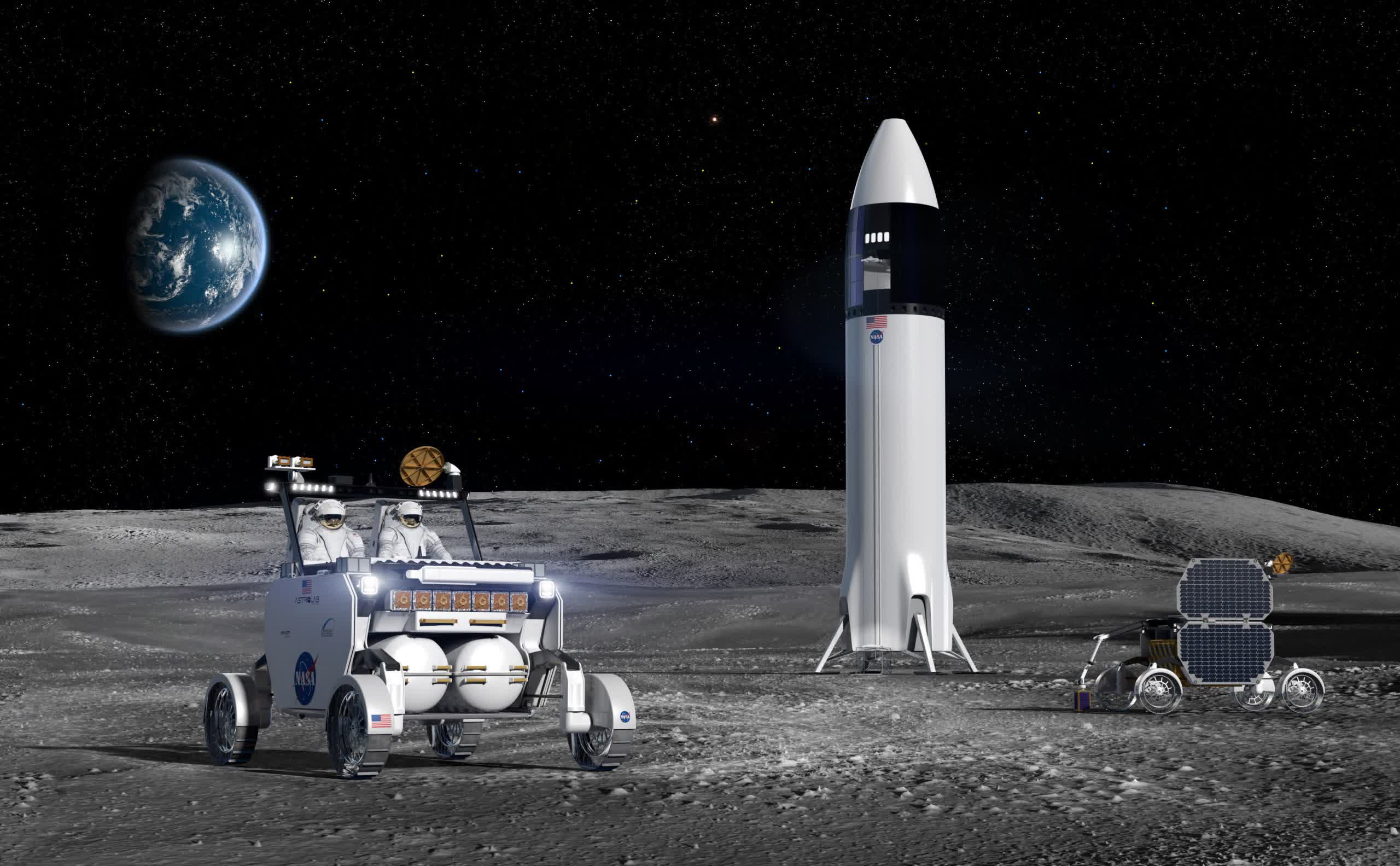NASA has selected three private companies, Intuitive Machines, Lunar Outpost, and Venturi Astrolab, to design and build the next lunar terrain vehicle (LTV). The rover will accompany the Artemis crew's mission to the moon's south pole. These companies will be responsible for the design, construction, and testing of the vehicle under the guidance and supervision of NASA.
Each company has its own take on what a modern lunar rover should look like. Each submitted some pretty cool concept LTV renders. My favorite is the Moon RACER LTV concept by Intuitive Machines (masthead). However, NASA's requirements take priority over aesthetics, so the final vehicle will likely look much different. It's worth mentioning that NASA awarded Intuitive Machines $77 million in 2019 to deliver five scientific payloads to the lunar surface.
The rover must handle rugged terrain so the suspension system and tires will be robust. It should have ample cargo space for collecting samples and transporting other equipment for experiments. In that respect, it will need to function as a portable lab.
"This vehicle will greatly increase our astronauts' ability to explore and conduct science on the lunar surface while also serving as a science platform between crewed missions," said Vanessa Wyche, director of NASA's Johnson Space Center in Houston.
Additional features that the agency expects include advanced power management, autonomous driving, and state-of-the-art communications/navigation. NASA plans to use the autonomous-driving feature to continue scientific objectives in between Artemis missions. In times when the space agency has no activities to perform, the service provider can lease time commercially to anyone wanting to conduct lunar experiments or exploration of their own.
NASA has $4.6 billion to distribute over the next 10 years. The companies receive annual "firm-fixed-price task orders" for completing milestones, the first of which is a feasibility study. Over the next year, the firms will research and develop a design that meets all of NASA's requirements. If they deliver the milestone, they can move on to the next task order, and the process repeats.
One of the final task orders before the manned Artemis mission is to deliver a working prototype to the moon for practical testing and demonstration. NASA anticipates only one design making it to that funding round. After that, the company will provide the rover as a service contract through 2039.
"With the Artemis crewed missions, and during remote operations when there is not a crew on the surface, we are enabling science and discovery on the Moon year around," said Jacob Bleacher, chief exploration scientist in the Exploration Systems Development Mission Directorate at NASA Headquarters in Washington.
Nasa did not mention a specific time frame for launching a prototype for testing. However, the optimistic schedule for landing a crew is Artemis III in 2026, which is hardly enough time to complete the task. A more realistic estimate would be Artemis IV, planned for 2028, giving the companies less than four years to have a working model. They better get busy.


